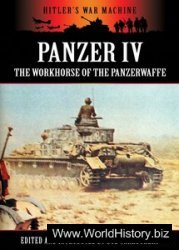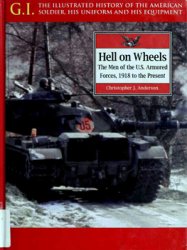Although the invasion of Poland saw the first use of motorised infantry, the 1940
French campaign showed the German blitzkrieg tactics to full effect. Conversely, by 1944, the panzergrenadiers proved themselves highly skilled at delaying the Allied advance through France and the Low Countries. "
Panzergrenadiers were used throughout World War II, from the invasion of Poland in September 1939, to the battle for Berlin in April 1945. As a fighting elite accompanying the panzers into action, or as infantry fighting stubborn rearguard actions, they were typically engaged in the thickest fighting of the war. They fought in both offensive and defensive mode; as the war went against Germany from 1942-43 it was increasingly in the latter role that they were deployed. Throughout the war, some of the best units of the German armed forces fought as panzergrenadiers. These included the Grossdeutschland Division, 1st SS Leibstandarte Adolf Hitler Division, 2nd SS Das Reich Division, 12th SS Hitler Jugend Division, the Brandenburg Division and the Luftwaffe’s elite Hermann Goring Division. Although many of these panzergrenadier divisions were later reorganised as panzer divisions, even with such reorganisation, all panzer divisions, including elite formations such as the Wehrmacht’s Panzer Lehr Division, always had attached panzergrenadier regiments that would go into battle with the armour.
To make sense of the widely spread theatres of war in which panzergrenadiers fought, the two chapters on the panzergrenadiers’ war record will focus firstly on the war in
Left: SS panzergrenadiers from Kampfgruppe Hansen smoking captured American Camel cigarettes, somewhere in the Ardennes during the Battle of the Bulge, 1944. Behind them is a knocked-out American M8 armoured car.
The West, before examining events on the Eastern Front in the next chapter. With this in mind, this chapter will deal briefly with the invasion of Poland before examining two case studies in which panzergrenadiers were heavily involved: firstly, the elite Grossdeutschland Regiment’s offensive action in Operation Niwi and across the river Meuse at the battle of Sedan in May 1940 during the Fall of France; secondly, the defensive action of the 12th SS Hitler Jugend (Hitler Youth) Panzer Division in Normandy in 1944. Chapter Four will then cover the panzergrenadiers’ war on the Eastern Front by examining three pertinent case studies: firstly, the German advance on Moscow following Operation Barbarossa when it looked as though Germany would capture Moscow and conquer the USSR; secondly, panzergrenadiers in action during the battle of Kursk in 1943, the biggest tank battle of the war, with over 6000 tanks and self-propelled guns involved, where the Soviets halted the German advance; finally, panzergrenadiers in a defensive role on the borders of Germany in 1944 as the Red Army steamrollered west into Poland and Germany. These case studies provide accounts of panzergrenadiers in a variety of different theatres of war, and show how the panzergrenadier performed in attack as well as defence. As will be seen, whether fighting in the woods of the Ardennes, the bocage of Normandy, or the steppes of the Soviet Union, German panzergrenadiers invariably proved the maxim of the German army commander of the 1920s, Hans von Seekt: 'Mehr seins als Schein' (‘Be more than you appear to be’).




 World History
World History









